5 Stunning Natural Wonders to Explore in Turkey

Turkey is the only country worldwide that three botanical geographical regions influence, which makes its natural wonders exceptional. The distinctive location has blessed the country with a wider variety of landscapes than anywhere else, ranging from untouched beaches to rugged mountains, all waiting to be explored through carefully curated Turkey tours.
Pamukkale, a UNESCO World Heritage Site, boasts stunning white mineralized pools tumbling down a mountain slope in tiers. Cappadocia is breathtaking with its strange 'fairy chimney' rock formations, underground cities, and cave dwellings. Lake Van is over 3,755 square kilometers and is one of the world's largest endorheic lakes.
Nature lovers can discover Butterfly Valley, a sanctuary that houses over 80 butterfly species and the critically endangered Jersey Tiger Moth. Mount Nemrut reaches a height of 7,001 feet (2,134 meters) and features colossal stone statues of kings and gods that reach as high as 9 meters. The beauty of the nation is represented by the 18-kilometer Patara Beach and the 40-meter Düden Waterfalls, giving you breathtaking experiences in every direction you look.
Pamukkale: The cotton castle of Turkey
Pamukkale is situated in southwest Turkey and boasts one of the most surreal landscapes on Earth. The name itself means "cotton castle" in Turkish - a fitting title for the stunning white terraces tumbling down the hillside.
Terraced hot springs and travertine pools
A fascinating natural process creates Pamukkale's striking white formations.Thermal water charged with calcium carbonate rises through springs at temperatures ranging from 35°C to 100°C. The mineral-laden water flows downhill and cools. This generates carbon dioxide and makes calcium carbonate precipitate as the dazzling white travertine terraces. These deposits have shaped an otherworldly landscape filled with petrified waterfalls, stalactites, and stepped pools.
The terraces look like snow-white slopes ascending against Turkey's green countryside from a distance. The tourists walk barefoot along the flat white limestone pavement. Warm water puddles are perfect locations to soak your feet.
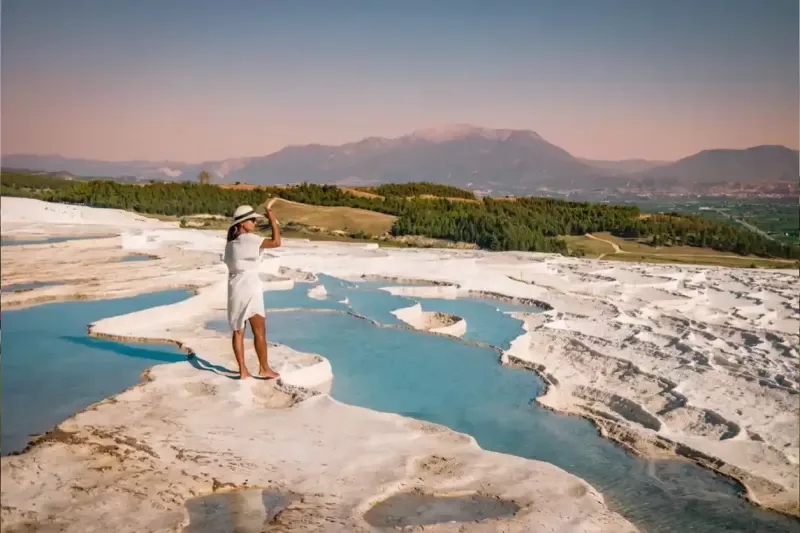
Customize Your Dream Vacation!
Get in touch with our local experts for an unforgettable journey.
Plan Your Trip
The ancient city of Hierapolis
Hierapolis, a Greco-Roman spa city from the 2nd century BCE, rests atop these magnificent travertines. The healing properties of the thermal springs provided this ancient settlement with prosperity. There exists a still-standing Roman theater, a large necropolis area of over two kilometers, and Temple of Apollo among its ruins.
It was a key religious center. Pagans initially prayed to the mother deity Cybele here. Christians subsequently made it the martyrdom site of St. Philip. The intriguing Plutonium - a cave that released toxic carbon dioxide - was believed to be a portal to the underworld.
When to visit for the best experience
The best time to visit Pamukkale is in spring (April to June) or fall (September to October). The climate remains pleasant, and tourists remain fewer during these seasons. The south gate opens at 6:30 am. Early risers get to enjoy wondrous moments before tour bus crowds. Summer means scorching heat over 35°C, rendering exploration quite unbearable. Pamukkale faces conservation challenges. Nevertheless, it is a breathtaking marvel in which geology, history, and loveliness unite in a virtually outstanding setting.
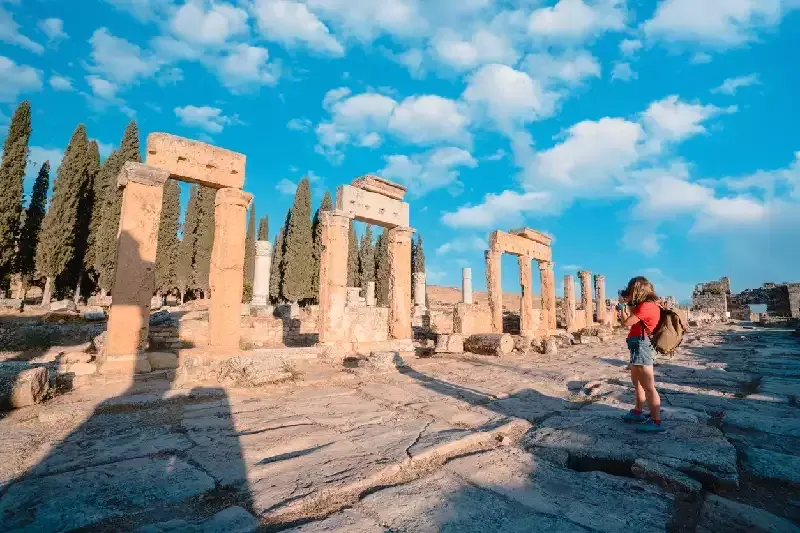
Cappadocia: A Surreal Landscape
Cappadocia is among the most remarkable natural wonders in Turkey. Its landscape testifies to millions of years of volcanic activity and erosion.
Fairy chimneys and rock formations
Cappadocia's iconic fairy chimneys started their journey millions of years ago when volcanic eruptions blanketed the region with ash. The ash hardened into soft tuff rock and acquired a protective layer of harder basalt. Wind and water wore down the softer tuff while the basalt wore down gradually. The result? Mushroom-topped spires that rise up to 130 feet (40 meters) into the air. These natural formations cluster most densely between Avanos, Ürgüp, and Uçhisar. Nature's touch of artistry runs through these geological phenomena, and Goreme Valley boasts dense alignments of tall, whimsical rock pillars.
Hot air balloon flights at sunrise
Daybreak balloon flights have become the must-do experience in Cappadocia during Turkey Trips. Balloons take off from Goreme National Park and soar about 1,000 feet above. Tourists watch the sunrise paint the fairy chimneys, cave houses, and fields with gold. Plateaus of Uçhisar Castle, the region's highest elevation, have breathtaking views of multi-colored balloons hovering above the kaleidoscope landscape. Rock formations in the Red Valley and hot air balloons numbering hundreds create one of the most photographed landscapes in the world.

Touring underground cities and cave churches
An intriguing labyrinth of ancient cities lies beneath Cappadocia's surface. Derinkuyu is the largest underground city, which has 85 meters depth with 18 levels of tunnels. It would be capable of housing 20,000 citizens and their animals. These underground wonders have air shafts, wells, stables, cellars, storage facilities, and chapels. The region also contains hundreds of cave churches decorated with beautiful Byzantine frescoes created in the 9th and 10th centuries. The Göreme Open Air Museum, a World Heritage Site since 1985, features some of the most well-preserved religious artwork.
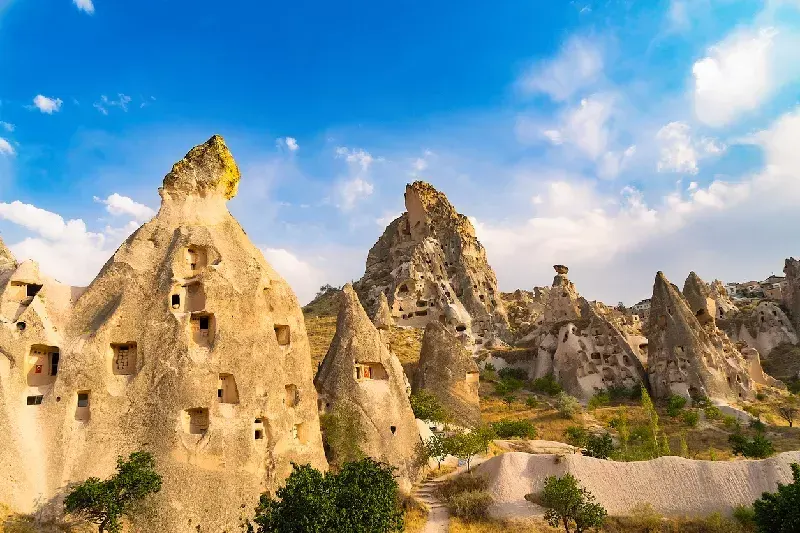
Lake Van and the Eastern Highlands
Lake Van dominates eastern Turkey's landscape with its striking turquoise waters that cover an impressive 1,434 square miles (3,713 square km).
Volcanic origins and turquoise waters
Lake Van was shaped through Tectonic activity over 600,000 years ago. Mount Nemrut volcano lava flowed nearly 37 miles in the southwestern extremity and blocked westward drainage to the Murat River. This natural action converted the depression into an endorheic lake without any outlet. The lake contains three different summer temperature layers. Its distinctive alkaline characteristics create that mystical turquoise color.
Akdamar Island and the Church of the Holy Cross
Lake Van features four main islands, with Akdamar Island standing out as a rich source of history. The stunning Cathedral of the Holy Cross, built between 915-921 AD, graces the island's landscape. Architect-monk Manuel designed this masterpiece. The Armenian church's pink volcanic tufa construction showcases extraordinary stone relief decorations that wrap around the building in various bands. Detailed bas-relief carvings tell biblical stories and display earthly scenes of palace life and hunting.
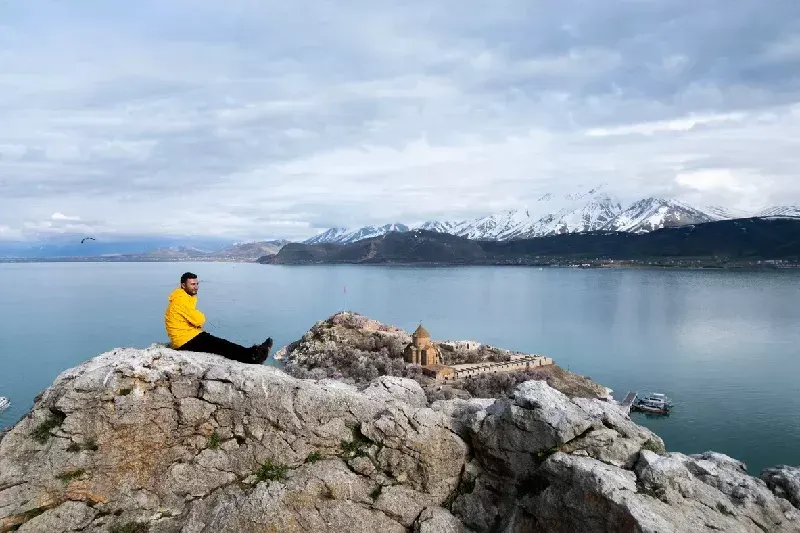
Birdwatching and local wildlife
Lake Van's basin becomes home to hundreds of bird species year-round. Protected wetlands support 99 bird species, including flamingos that migrate from Iran's Urmia Lake. These marshes are a vital habitat for whooper swans and various duck species. Pearl Mullet (Alburnus tarichi) remains the only fish species that thrives in the lake's brackish waters.
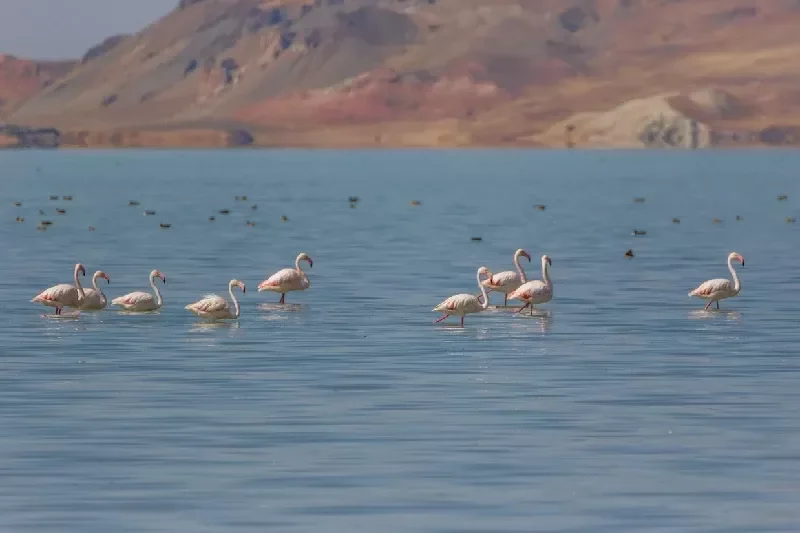
Butterfly Valley and the Turquoise Coast
Butterfly Valley stands as one of Turkey's most secluded natural wonders. This hidden gem sits along the southwestern Mediterranean coastline, where massive cliffs dive into crystal-clear waters.
Boat access and dramatic cliffs
The valley is available only by sea or through a tough hike, which adds to its untouched beauty. Most people take boats from Ölüdeniz that leave at set times (11:00, 14:00, and 18:00). Massive cliffs that reach 350 meters high surround the valley. These natural walls create a sanctuary between two mountains that drop straight into the turquoise Mediterranean.
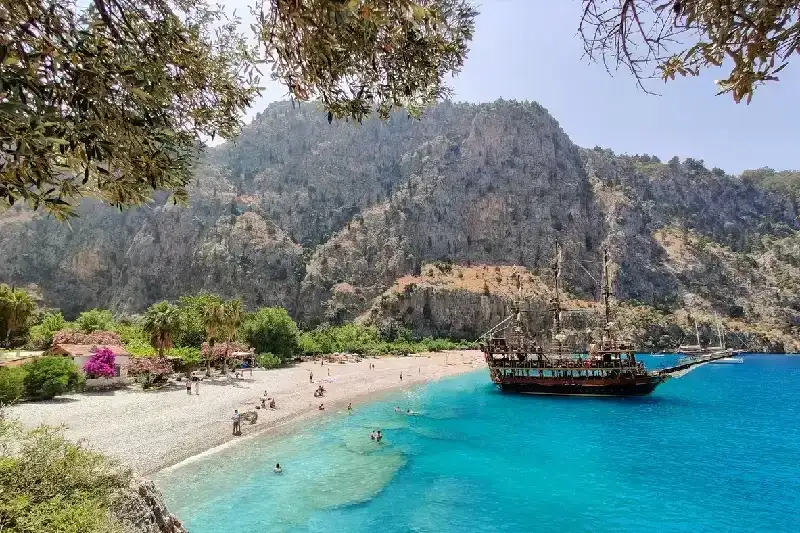
Hiking trails and hidden waterfalls
Adventure seekers will find several great hiking trails in the valley. A simple 30-minute flat path takes you to stunning waterfalls in the nature preserve. The trail from the beach up to Faralya village needs more work and has steep parts where ropes help you climb. A 50-meter high waterfall creates small pools that are perfect for swimming. You'll need good shoes since the ground is rough and can get slippery.
Best time to see butterflies
The valley got its name from its 80+ butterfly species, including the rare Jersey Tiger. Of course, you'll see them best from mid-April to late May and again in September-October. Your best chance to spot these delicate creatures comes in the early morning, before boat noise scares them away. While mass tourism has hurt butterfly numbers, this coastal treasure remains one of Turkey's most beautiful spots.
Mount Nemrut: Turkey's Ancient Wonder
Mount Nemrut stands majestically on Turkey's southeastern Taurus Mountains. This remarkable archeological site sits 7,001 feet (2,134 meters) above sea level and features a 50-meter artificial mound surrounded by massive stone statues built in 62 BCE.
Why Visit the Stone Heads
King Antiochus I of Commagene commissioned these remarkable sculptures that once stood 10 meters tall and weighed 6 tons each. The statues represent a unique blend of Greek and Persian deities - Zeus combined with Oromasdes and Heracles merged with Artagnes. The site's distinctive look comes from earthquakes that knocked the heads off their bodies, leaving giant stone heads scattered across the terraces.
These statues tell a fascinating story about the region's theocratic monarchy. The east and west terraces showcase similar groups of five seated figures. Guardian eagles and lions flank these figures to symbolize both celestial and earthly power. The artificial mound still holds secrets as archeologists have not yet found the original tomb inside this UNESCO World Heritage Site.
Getting to Mount Nemrut
Adıyaman serves as the closest major city, though many visitors arrive through Gaziantep airport. The mountain lies about 1 hour and 15 minutes by car from Adıyaman. Visitors can also reach Mount Nemrut from several other cities: Malatya and Şanlıurfa (2.5 hours away), or Mardin (3.5 hours away).
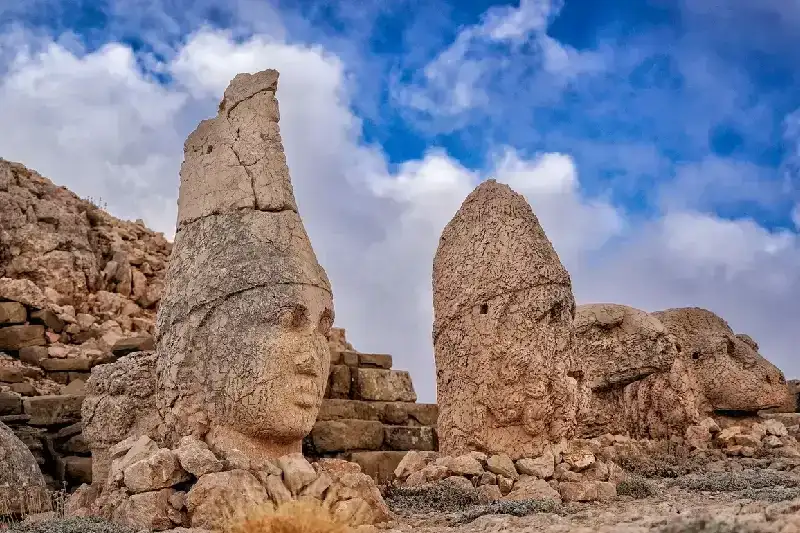
Travel Tips for Exploring Natural Wonders in Turkey
To make the most of your journey through Turkey’s natural wonders, plan your visits by season—spring and autumn offer mild weather and fewer crowds. Rent a car if you want to explore remote gems like Lake Van or Mount Ararat. Always wear sturdy shoes for hiking and bring sunscreen and water, especially for places like the Göreme Valley or Pamukkale. Booking guided tours through trusted Turkey travel packages can also enhance your experience and provide local insight. Don’t forget to respect nature and local customs during your trip!
Check out our Turkey travel packages for flexible options that let you discover timeless sites!
FAQS
Turkey has many natural wonders to offer, each more breathtaking than the last. From the white travertine terraces of Pamukkale to the surreal landscapes of Cappadocia and the turquoise depths of Butterfly Valley, the country is a treasure trove of scenic beauty.
Yes, visitors can swim in the ancient Cleopatra’s Pool located near Pamukkale. It’s a unique experience to bathe among submerged Roman ruins, making it a must-do when exploring natural wonders in Turkey.
Cappadocia is renowned for its surreal landscapes, fairy chimneys, and hot air balloon rides. As one of the most photographed wonders of Turkey, its unique geology and cave dwellings attract travelers from all over the world.
Absolutely. Lake Van, Turkey’s largest lake, offers breathtaking views, ancient churches on islands, and rare soda waters. It’s an underrated gem among the natural wonders in Turkey, perfect for those seeking less-traveled destinations.
Butterfly Valley can be reached by boat from Ölüdeniz, or by hiking down from the cliffs above. It’s one of the hidden natural wonders in Turkey, offering unspoiled beaches and vibrant nature, especially in spring and summer.
Mount Nemrut holds mysterious giant stone heads and the ancient tomb of King Antiochus I. As one of the archaeological wonders of Turkey, it’s especially magical at sunrise, when the statues are bathed in golden light.
Related Articles
Keep the inspiration going with these handpicked travel reads.
